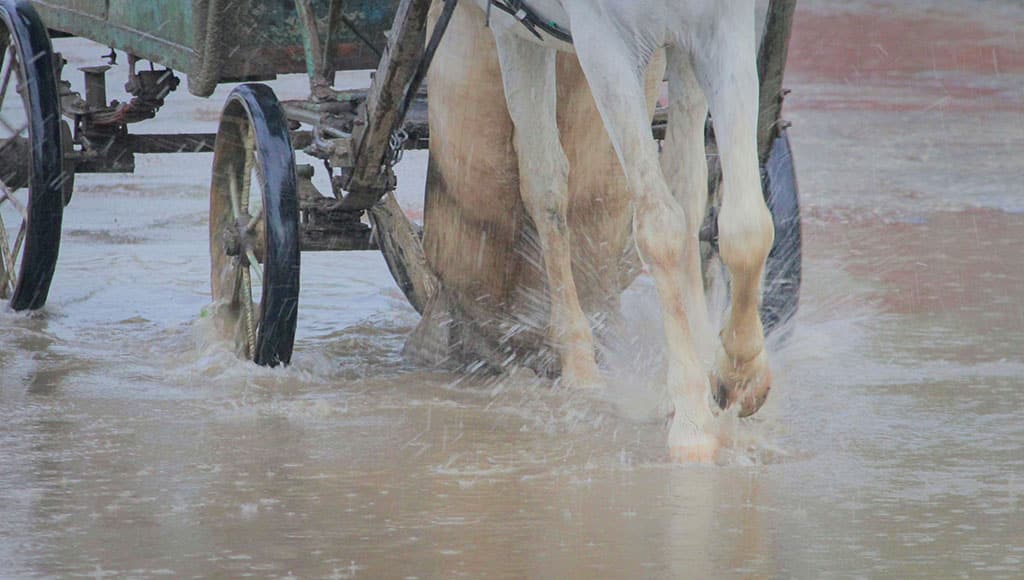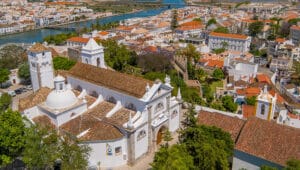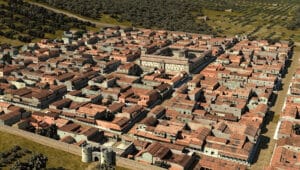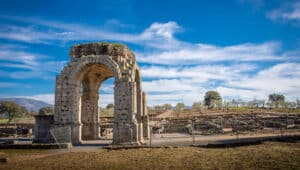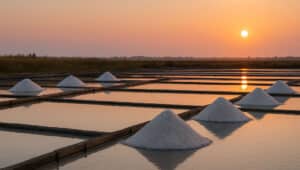The road-side flood marker as you descend the hill on the approach to Mértola from the south shows a scarcely believable record of the events in the valley of the Guadiana nearly a century and a half ago.
In November and December of 1876, the level of the Guadiana rose no less than 25m above its normal level, and downstream Vila Real de Santo António suffered a major catastrophe, as 11 people lost their lives.
In a recent article, the environmental engineer Aurélio Nuno Cabrita discussed the damage resulting from the rainstorms of November and December of 1894, 18 years later. Almost exactly 130 years ago, the Algarve endured a major flood disaster, possibly the worst since the record-breaking events of December 1876.
Historically, the Algarve months of November and December have usually been very wet, and consequently Algarvians habitually experienced material and economic losses – even human lives. The two weeks from November 23 to December 5 in 1894 were so unusually wet and stormy that people were prevented from leaving their homes. The rich and well-off suffered considerable material losses, but the majority of the population was so poor that their losses reduced them to utter penury. As most were subsistence farmers, the interruption in the agricultural cycle condemned them to a future of hunger and even starvation.
The damage was centred in Faro, where newspaper reports at the beginning of December noted serious flooding. Houses had collapsed, and their inhabitants were forced to seek shelter with their neighbours and in public houses. The pumps of the fire service were unable to keep up the necessary drainage.
The recently opened rail link between Faro and Lisbon was also affected. Just outside Faro, the bridges over the small river Marchil were completely submerged. The floodwaters inundated the surrounding area and dragged the ballast from under the railway sleepers. The newspaper of December 3 reported that the Lisbon train had left the capital at 16:30 the previous day and approached the bridges at 05:00 in the morning. As the locomotive ran on to the bridge, the unsupported rails failed and threw the locomotive into the river below. The driver was killed instantly, and the fireman was trapped in the wreckage for six hours before he was freed. No passenger was hurt, and all were rescued from the carriages by boat later that day.
As well as the accident at Pontes de Marchil, the railway was damaged at other points. The bridge at Quarteira and the line between Faro and Albufeira were damaged, and so too was the railway telegraph, as the posts disappeared in the floods. The telegraph was repaired on December 6, and the derailed locomotive was back on the tracks on the following day.
Another incident concerned four young men from Loulé. They had participated in a student concert at the Teatro Lethes in Faro. As they returned that night by coach to Loulé, the vehicle was negotiating a flooded roadway when the waters suddenly pushed the coach and its horses off the road. The coachman was flung into the water up to his neck and the four boys climbed a nearby tree, where they remained all night before being rescued at dawn.
From December 4, the newspapers reported that damage to property in the Algarve was widespread, many hundreds of people had been made homeless, and all of the countryside around Faro was under water. Some houses were flooded to the eaves, and their occupants had to be rescued by boat.
A further report showed that the road between Faro and Loulé was impassable as a bridge had collapsed and the bridge at Boliqueime carrying the main road had also collapsed, cutting communication between Faro and the Barlavento. Repairs to the main road to the west of the city were carried out by 30 workmen and 40 workwomen, and the Câmara decided to shelter the homeless in the former Capuchos monastery (Convento de Santo António, today the GNR headquarters).
The Câmara (town hall) at Faro debated a motion to ask for help from the Queen Dowager D. Maria Pia, and simultaneously the Loulé Câmara telegraphed to Queen D. Amélia for aid for those who had been made homeless by the floods.
As the rain abated during the days December 6-9, Faro Câmara received a message from the Queen Dowager that she would take steps to ensure that such aid as possible would be granted.
Similar stories of flood damage came in from all parts of the Algarve. Lagos suffered widespread flooding and destruction, and a longboat foundered at the Barra do Ancão with the loss of four lives. The rivers at Silves and Tavira had both overflowed and had caused immense damage in their respective towns.
At Tavira, the floods reached unprecedented heights and the torrents of the River Gilão carried trees and other debris against the Roman bridge. The whole of the centre of the town was flooded, and more than 600 houses were affected. Household furnishings and clothes were ruined, and residents were forced to carry their wives and children to safety further uphill. The floods at Silves were even deeper and the lower part of the town was flooded to the depth of two metres.
At Vilarinhos near São Brás de Alportel, the family of one market gardener was trapped in their house, and as the floodwaters rose, they were eventually rescued after climbing on to the roof. Damage to houses and fields in Fuseta was extensive, and a house fronting the main square in Estoi collapsed. São Bartolomeu de Messines reported that not only was the town flooded, but the floodwaters had deposited large amounts of rubble in the streets.
Further afield, Monchique was heavily afflicted by the violent weather and underwent catastrophic flooding and consequent damage. The postal service was suspended and public performances at the theatre were postponed. At Paderne, a 33 year-old man was drowned as he watched the floods from the bridge next to Purgatório. His companions had moved away from the bridge as the floodwaters swelled, but he remained to watch and suddenly the bridge gave way, and he was thrown into the torrent and lost.
Newspaper reports showed that losses of livestock were enormous; that many walls had been destroyed and that most roads were impassable. The outcome was that agricultural land lost two thirds of its value, as fig, orange, carob, olive and almond trees were washed away, along with many of the sugarcanes. As many bridges were broken, efforts to bring supplies to remote areas were also hampered. The export of agricultural produce was halted and the whole economy of the Algarve came to a halt. At Paderne, the products of the land became a liability. The 80,000 arrobas of carob and 10,000 arrobas of almonds, as well as the products of the esparto industry were immobilized and could not be sold. (An arroba was equivalent to 15 kg).
The families living at watermills were particularly at risk. Five or six mills were completely swept away, and at others the millers and their families escaped only via the roofs, some of them clinging on to the tiles for up to 16 hours before rescue.
The newspaper archives are a valuable resource in identifying such disasters and prove that extreme weather events are not new, and that there are cycles of drought and excess rain. Can the current climate change orthodoxy really explain these disasters of yesteryear?
Cabrita went on to stress the importance of treating the problems of environmental and climate change; of urban and territorial planning; and of the urgent need to reforest the hills of the Algarve. With climatic changes close at hand, it is certain that the extreme floods experienced in 1876, 1894, 1989 and 2000 will recur. We should do everything in our power to mitigate their effects.
By Peter Booker
|| features@portugalresident.com
Peter Booker co-founded with his wife Lynne the Algarve History Association.
www.algarvehistoryassociation.com

